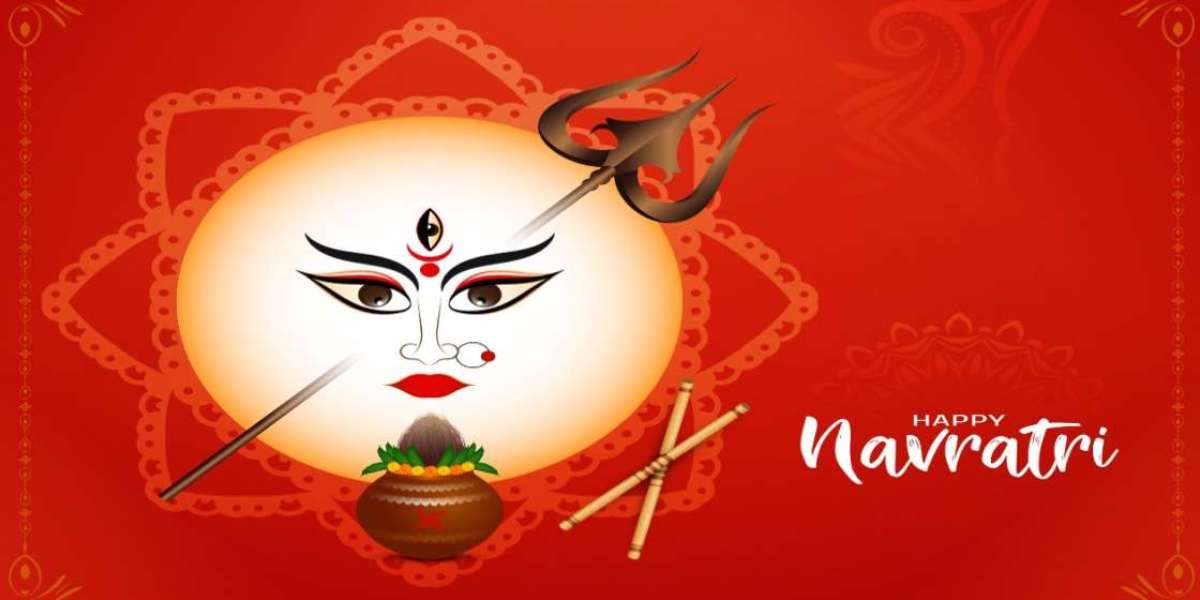Introduction
Navratri, one of the most widely celebrated Hindu festivals in India, is a nine-day festival that honors the divine feminine energy and the triumph of good over evil. Derived from the Sanskrit words “Nav” (meaning nine) and “Ratri” (meaning nights), Navratri involves worship, dance, fasting, and cultural celebrations. A unique feature of Navratri is the association of specific colors with each of the nine days, each symbolizing a unique quality, emotion, or aspect of life. This tradition of wearing different colors each day is deeply rooted in spiritual beliefs and cultural significance.
In this article, we will explore the colorful traditions of Navratri, delving into the significance of each color and how they influence the way devotees celebrate the festival. Whether you're preparing your wardrobe or simply curious about the cultural meanings behind these colors, understanding the significance of Navratri colors will enhance your connection to this beautiful festival.
The Significance of Navratri Colors
Navratri is not just about rituals and prayers; it’s also about embracing the vibrancy of life through colors. Each of the nine days of Navratri is dedicated to a different form of Goddess Durga, and each form is associated with a specific color. Wearing the designated color on each day is believed to invoke blessings and attract positive energy.
The Nine Colors of Navratri: What They Represent
1. Day 1: Yellow – The Color of Joy and Energy
- Goddess Worshipped: Shailaputri
- Symbolism: Yellow is associated with brightness, positivity, and cheerfulness. It represents the freshness of a new beginning as devotees embark on their spiritual journey. The color is also linked to energy and vitality, perfectly setting the tone for the nine days of celebration.
- Traditions: People typically wear yellow attire on this day, and it’s common to see homes decorated with marigold flowers, which are also yellow.
2. Day 2: Green – The Color of Growth and Harmony
- Goddess Worshipped: Brahmacharini
- Symbolism: Green signifies growth, nature, and harmony. It reflects the importance of balancing spiritual growth with the physical aspects of life. Wearing green on the second day is believed to bring about new opportunities and foster harmony in relationships.
- Traditions: Many devotees adorn themselves with green outfits and accessories to align themselves with the day’s energy.
3. Day 3: Grey – The Color of Balance and Neutrality
- Goddess Worshipped: Chandraghanta
- Symbolism: Grey, an unusual choice in festive colors, symbolizes balance and neutrality. It represents the calm and composed nature of the Goddess, who balances the fierce and gentle aspects of life. Grey is worn to channel peace and clarity during the spiritual journey.
- Traditions: Grey outfits and simple decorations mark this day, emphasizing tranquility and inner peace.
4. Day 4: Orange – The Color of Enthusiasm and Warmth
- Goddess Worshipped: Kushmanda
- Symbolism: Orange is vibrant and full of energy, symbolizing enthusiasm, creativity, and warmth. It represents the creative aspect of the universe, encouraging devotees to embrace the energy within. Wearing orange is believed to ignite spiritual zeal and boost positivity.
- Traditions: The day is marked with devotees wearing orange attire and indulging in festivities filled with warmth and joy.
5. Day 5: White – The Color of Purity and Peace
- Goddess Worshipped: Skandamata
- Symbolism: White represents purity, innocence, and peace. It’s a color that embodies the serene and nurturing qualities of the Goddess. Wearing white is believed to purify the mind and soul, fostering peace and harmony within.
- Traditions: On this day, devotees dress in white and offer white flowers during prayers, reflecting the purity of devotion.
6. Day 6: Red – The Color of Strength and Passion
- Goddess Worshipped: Katyayani
- Symbolism: Red is the color of power, strength, and passion. It represents the fierce nature of the Goddess, who destroys evil forces and protects her devotees. Wearing red is believed to instill confidence and drive within the devotees.
- Traditions: Red dominates the day’s celebrations, with vibrant outfits, red bangles, and decorations symbolizing the strength and vitality of the Goddess.
7. Day 7: Royal Blue – The Color of Trust and Tranquility
- Goddess Worshipped: Kalaratri
- Symbolism: Royal blue symbolizes calmness, trust, and intelligence. It represents the divine power that resides in peace and wisdom. Wearing royal blue is believed to enhance inner strength and clarity.
- Traditions: Devotees typically opt for deep blue outfits, reflecting the day’s spiritual significance while maintaining an aura of serenity.
8. Day 8: Pink – The Color of Love and Compassion
- Goddess Worshipped: Mahagauri
- Symbolism: Pink represents universal love, compassion, and nurturing qualities. It symbolizes the benevolent nature of the Goddess and her blessings of unconditional love. Wearing pink on this day is believed to attract love, compassion, and kindness.
- Traditions: The festive spirit on this day is infused with shades of pink, from clothing to decorations, signifying love and unity.
9. Day 9: Purple – The Color of Spirituality and Ambition
- Goddess Worshipped: Siddhidatri
- Symbolism: Purple stands for ambition, power, and spirituality. It represents the higher spiritual awareness and the ultimate goal of achieving liberation. Wearing purple is believed to aid in spiritual growth and realization of ambitions.
- Traditions: On this final day, devotees adorn themselves in purple, culminating the Navratri journey with spiritual reflection and gratitude.
How to Incorporate Navratri Colors into Your Celebrations
1. Festive Wardrobe Planning
- Choose traditional outfits like sarees, lehengas, or kurtis in the designated colors.
- Mix and match accessories, like bangles and earrings, that complement each day’s color.
- Incorporate the daily color in your family’s attire, creating a unified look.
2. Home Décor and Festive Setups
- Decorate your home with flowers, fabrics, and lights matching each day’s color.
- Use colored rangoli powders to create intricate patterns that reflect the daily hues.
- Incorporate the Navratri colors in table settings, prayer areas, and festive décor.
3. Fasting and Food Preparations
- Prepare prasad (offerings) and dishes in line with the day's color to enhance the spiritual connection.
- Use food items like saffron (orange), coconut (white), and beetroot (red) to align meals with the color scheme.
Conclusion
Navratri is a festival rich in traditions, with colors playing a central role in enhancing the spiritual experience. Each color embodies unique qualities that resonate with the energies of the goddess worshipped on that day. By understanding and embracing these Navratri colors, devotees can deepen their spiritual journey and celebrate the festival with renewed meaning and purpose. Whether through fashion, home décor, or daily rituals, let these vibrant hues fill your Navratri celebrations with joy, devotion, and positivity.








